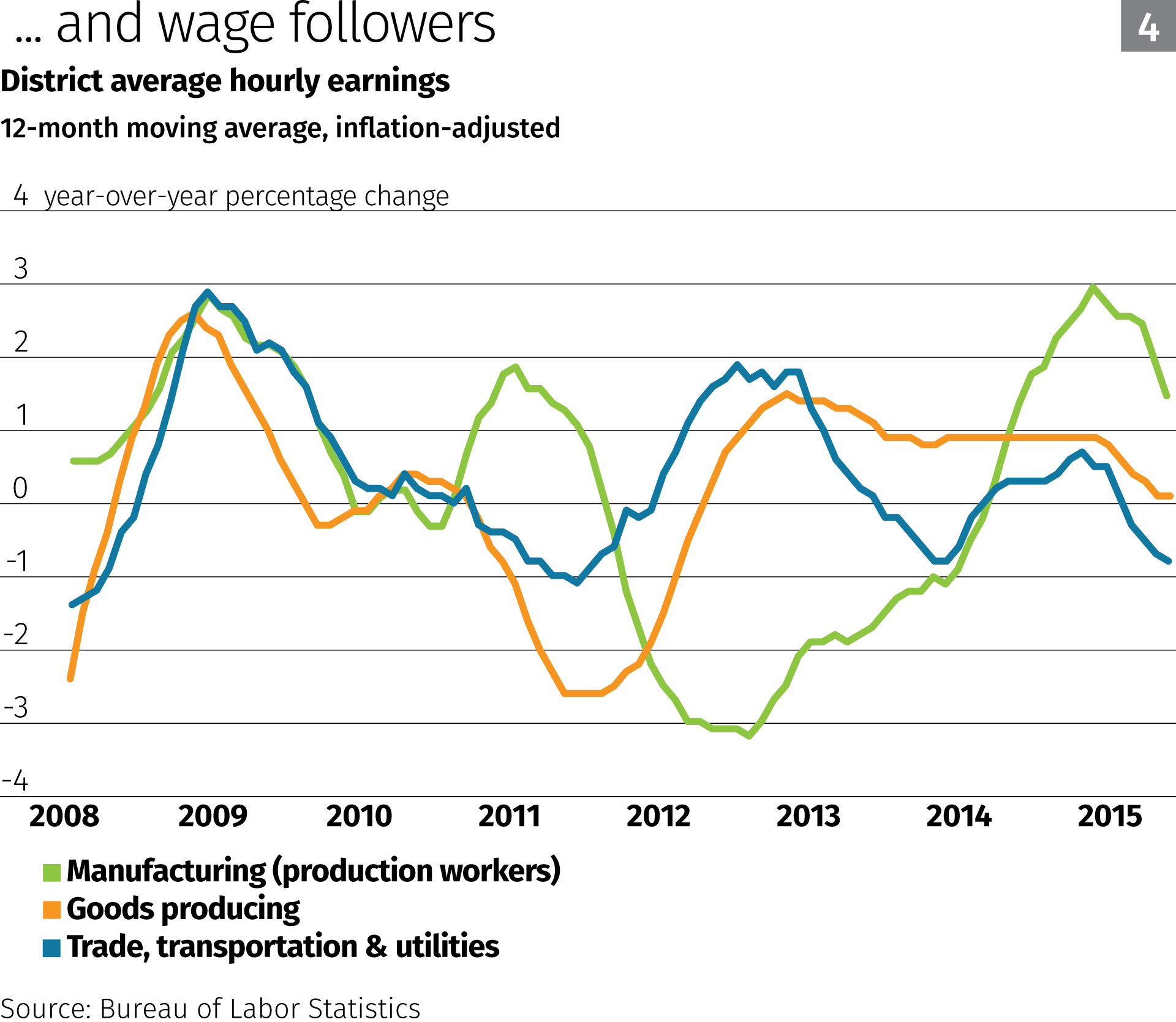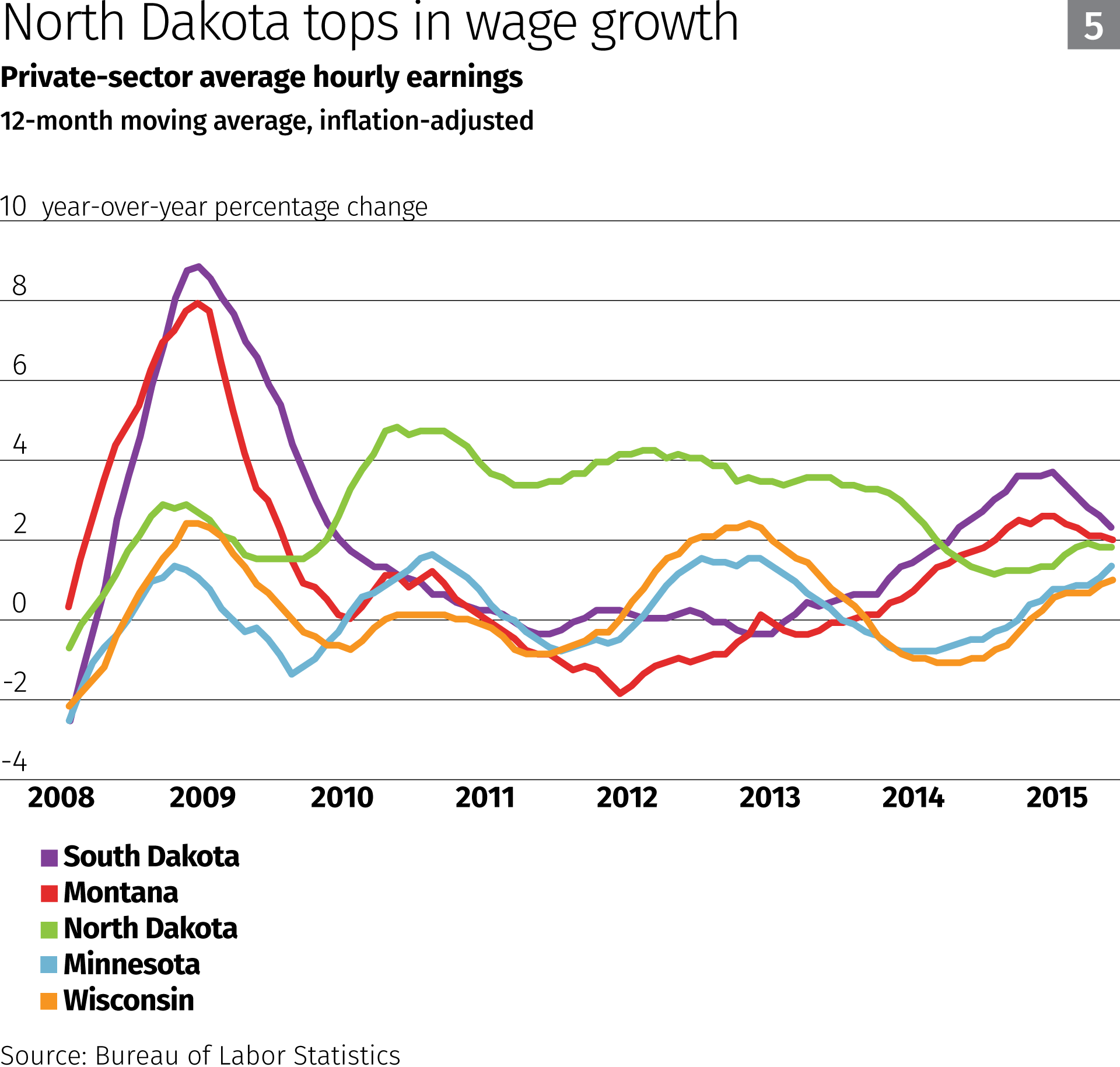Workforce special report: After years of stagnation, average earnings in the district appear to be rising
PHIL DAVIES | Editor, fedgazette
ASHWINI SANKAR | Research Analyst
Minneapolis Fed December 5, 2016
Over much of the past decade, U.S. wages have risen only slightly or not at all, even as employment rebounded and unemployment fell in the wake of the Great Recession. Wages have also stayed stubbornly flat in the Ninth District as a whole, stunting income growth for millions of households amid general economic recovery.
Today there are signs that wages nationwide and in the district are finally rising, albeit at a modest pace. Government labor statistics show that in May, private-sector wages in the district rose over 1 percent compared with the same month in 2015, a big improvement over minimal earnings gains since 2008.
Wage trends since the recession are difficult to interpret, in part because of changes in the composition of the workforce over that period. Nationally, wages appear to have marched in place when adjusted for inflation; average hourly earnings for private-sector employees increased less than 1 percent from 2008 to 2016, according to the Bureau of Labor Statistics. But this incremental growth obscures sometimes counterintuitive fluctuations in real wages during the downturn and its aftermath.

During the recession, average real earnings rose in the nation and in the district, despite lower demand for labor that triggered a sharp drop in employment (Chart 1). Then, at times during the subsequent recovery, wage growth slowed even as employment increased or held steady.
A possible explanation: Tens of thousands of lower-wage workers were laid off during the recession, increasing the proportion of higher-wage workers in the workforce; thus, average earnings for all workers increased. In 2012 and beyond, large numbers of lower-wage workers re-entered the labor force just as many higher-wage baby boomers were retiring.

Seven years into the recovery, a clear upward trend may be emerging from the wage data. Nationwide, average earnings in constant dollars rose 1.7 percent in May compared with 2015. The district saw slower inflation-adjusted wage growth of 1.4 percent year over year. But the increase far exceeded the paltry wage gains seen in the district over the previous eight years; earnings rose only one-half of 1 percent from 2008 to 2016.
Mostly good news for workers
A more detailed analysis of wage trends shows significant improvement in most economic sectors, and rising earnings in every district state.
Broken down by sector, wage changes were positive for district workers at both ends of the earnings spectrum. Workers in the leisure and hospitality sector on average earn lower wages than workers in the rest of the economy (Chart 2).
But leisure and hospitality saw the strongest surge in real wages among sectors; in May, average wages rose 5.2 percent year over year (Chart 3), a much bigger increase than average annual growth for the sector over the past decade.

Higher-wage professional and business services workers saw their average earnings jump 3.3 percent year over year, again outpacing long-run growth in the sector. (A May-June survey by the Minneapolis Fed and the Minnesota Department of Employment and Economic Development found a similar wage increase of 2.8 percent for professional services firms in the district.)

In education and health services, average wages grew by 2 percent in May, accelerating steady growth in the sector over the past three years.
The sectors that show no sign of an earnings turnaround are two of the district’s biggest: goods producing (a category that includes agriculture, mining, construction and manufacturing) and trade, transportation and utilities (Chart 4). Wages for goods producing workers rose just barely in 2016, although average hourly earnings in manufacturing were up 1.6 percent year over year in May—an advance over minimal overall wage gains since the recession.

Wages in trade, transportation and utilities fell year-over-year from January to May, continuing eight years of virtually flat wages.
Among district states (Chart 5), North Dakota dwarfs the rest in wage increases since the recession due to strong labor demand, stemming in large part from rapid oil and gas development in the western part of the state. North Dakota earnings aren’t rising as fast as they were before oil prices dropped in 2014, but wages still grew over 1.8 percent year over year in 2016.
Montana and South Dakota have also experienced wage growth above the district average over the past two years.
~~~
Workforce special report: After years of stagnation, average earnings in the district appear to be rising
Published December 5, 2016

